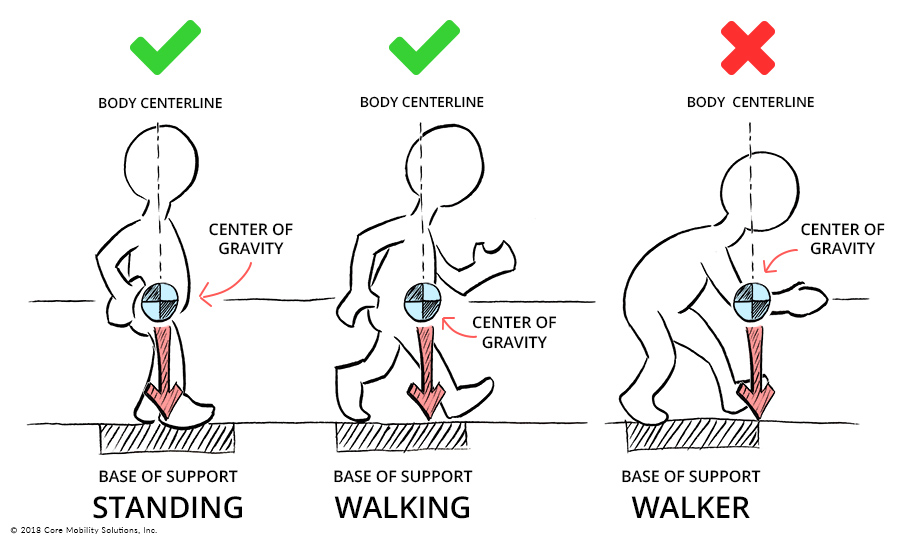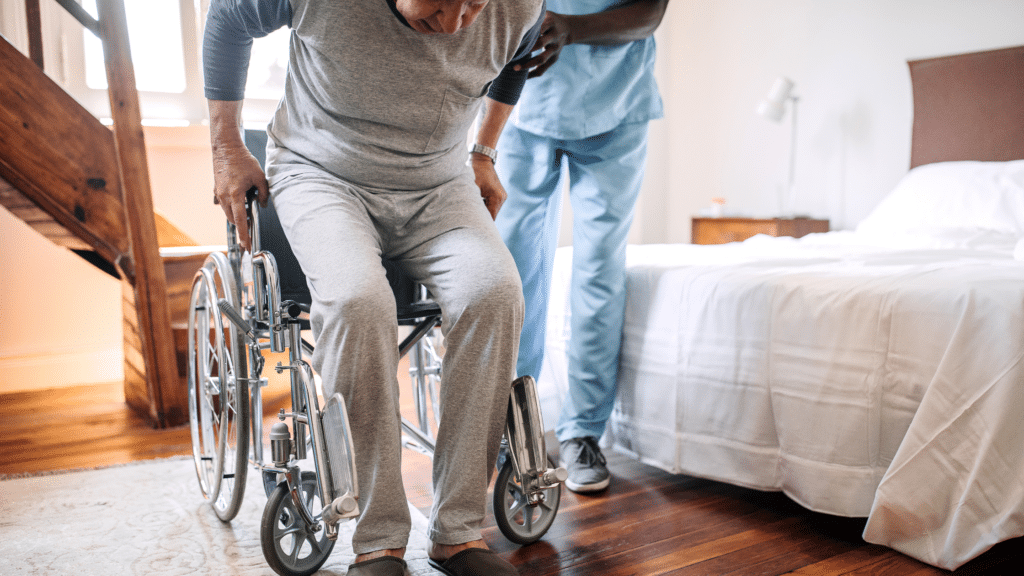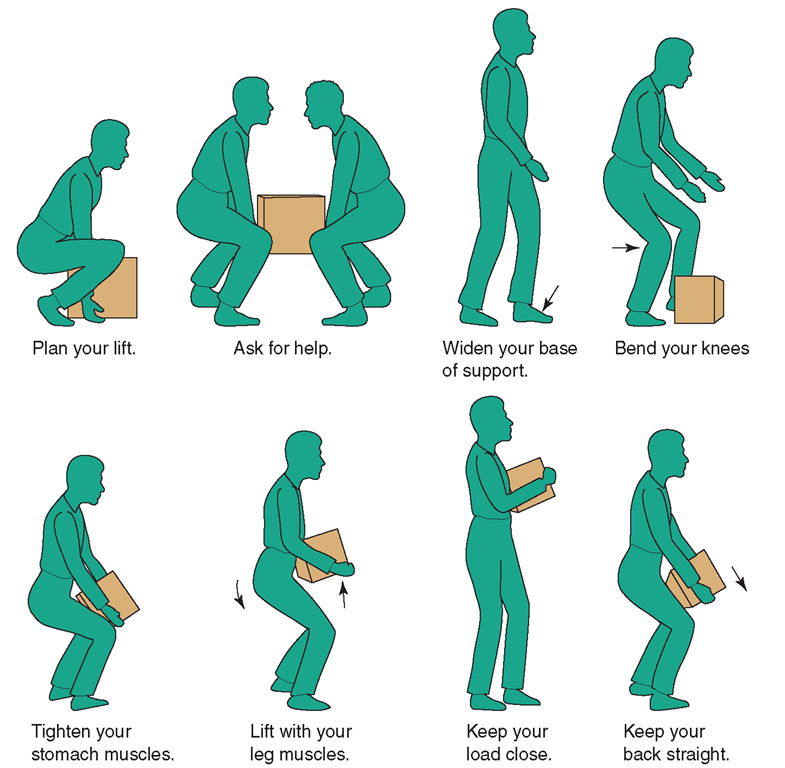Table of Contents
As a caregiver, it's necessary to understand the importance of body mechanics.
You must learn how to move and position the patient's body to avoid accidents.
It is also necessary for you to know the basics of body mechanics for you to better maneuver your body as well.
In this blog post, we will discuss body mechanics and how caregivers and healthcare workers can use them to prevent injuries.
According to Physiopedia, body mechanics describes how we systematically move our bodies.
They're coordinated movements working together with the musculoskeletal and nervous systems for a practical bodily function.
It includes appropriately positioning our bodies when we stand, sit, sleep, lift and even carry things.
So why is it important to use proper body mechanics in caregiving?
To understand how it works, we must learn the basic principles and types of body mechanics.
The center of gravity (COG) is the point where mass is centered.
It's found below the belly button and halfway between the lower back and stomach when we stand upright.
A lower COG means more stability. This can be done when we bring our COG closer to the ground.
The base of support (BOS) is the foundation for an individual, and when the feet are wide apart, the BOS increases.

There's also a vertical line that runs through our COG, which is the line of gravity. It should be straight from the top of the head to the feet with equal weight in all directions.
Lastly is posture or body alignment. When individuals perform any activity such as walking or lifting, they must keep a proper posture.
This is because good body mechanics are based on good posture. And good posture means placing the spine in a "neutral" position or "S" position.
When we're in this state, it's easier to maintain balance. This is because of all muscles work together for efficient movement.
The body works very hard to withstand the forces we put on it daily. So when we don't move correctly and safely, it increases the risk of damage to the body.
This is because the spine becomes subjected to abnormal stresses over time. As a result, it leads to degeneration of spinal structures like discs and other wear and tear which leads to back injuries.
Unfortunately, improper body mechanics in the healthcare setting is very routine.
Back injuries are very much common, especially in caregiving. In fact, 52% of caregivers are injured because of improper lifting and transferring.
That's why caregivers need to learn proper body mechanics.
Practicing it helps them work effectively without using too much energy and without causing excessive strain.

Caregivers are often required to carry out physically demanding tasks such as helping with transfers, bed mobility, and locomotion for seniors.
Many elderly loved ones need assistance when rolling or repositioning in bed or even coming up to a sitting position.
This requires caregivers to repetitively perform pull, reach, and push movements.
Because of this, caregivers are at risk of developing strain.
The challenge is that most perform these tasks in awkward and incorrect positions.
One way to counter that is to observe proper body mechanics.
Proper body mechanics for healthcare workers allow the body to absorb forces evenly.
Proper lifting and bending techniques in caregiving let the muscles function efficiently. In addition, it makes the body use less energy, resulting in less muscle fatigue.
Other body joints such as the spine, hips, and knees move in alignment with translating forces. Thus the possibilities of injuries and physical strains are lowered.
Good posture also helps promote physiological functions such as digestion and blood circulation.
The right stance reduces the impact of weight and gravity on supporting body structures.
Better stability also prevents caregivers from losing balance during outpatient care for the elderly.
Some other clinical tasks they perform include standing for long periods or bending. Repetitive movement and strain can affect the spine if body mechanics isn't practiced correctly.
Improper posture can cause kyphosis, lordosis, scoliosis, and other spine disorders.
Our first thought as caregivers is to safeguard and ensure the safety of our patients or loved ones.
Yet, our health and well-being can be easily overlooked.
Here's a quick reminder. We need to take care of ourselves first to take care of others. And that includes proper body mechanics to avoid spine and back problems.
To do this, you must practice proper lifting techniques.
Here are examples of good body mechanics that should be observed when performing caregiving duties.
For general rules, never carry more than you can comfortably handle. Allow your loved one to help as much as possible.

Scan the environment and ensure it's free of obstacles for patients to move safely.
As you start lifting your patient, ensure that your stomach muscles are tightened as it helps protect your back.
When you bend down, bend your knees rather than flexing at the hips. The back should always be in a neutral position.
Try to avoid twisting or rotatory movements upon lifting. Instead, stand up straight with your feet shoulder-width apart for a broad support base.
The same rules apply when caregivers perform patient transfers. For this case, hold your loved ones around their hips or waist.
You can use gait or transfer belts for balance and support as you complete the transfer.
The lifting should be accomplished by straightening your legs and rocking back with a count of "1-2-3" with the patient.
It's also recommended that patients look to where they're being transferred.
And if able, they can place their hands on the chair or bed to assist themselves in movements.
Check out these videos that demonstrate caregivers' essential, safe transfer and bed mobility techniques.
Learn more about musculoskeletal problems here.
It's necessary to understand the level of assistance your patient needs when practicing proper body mechanics.
Remember that our goal is to encourage our seniors to move on their own if they are capable. So take note of their existing conditions as you go.
Here are some helpful tips to keep in mind, especially when assisting the elderly.


If the person you are caring for is unable to assist in the transfer, a dependent transfer with a lift is the safest option. If they are able to help, follow the steps below.
These may sound like simple tips and techniques. But doing them regularly can help you maintain good posture and also keep you and your patient away from unnecessary pain and accidents.
Body mechanics are as necessary for the elderly as it is for the caregiver.
Knowing how to move patients and use your body for support can keep you both safe.
Many caregivers forget this basic yet essential practice. That's why I'm sharing this as a refresher for everyone.
This is also a reminder to take care of yourself, so you can perform your tasks and do your duties.
And if you have any more tips to share, make sure to leave a comment below.
That's all for today.
Take care, keep mom safe and have a great day!
Winn